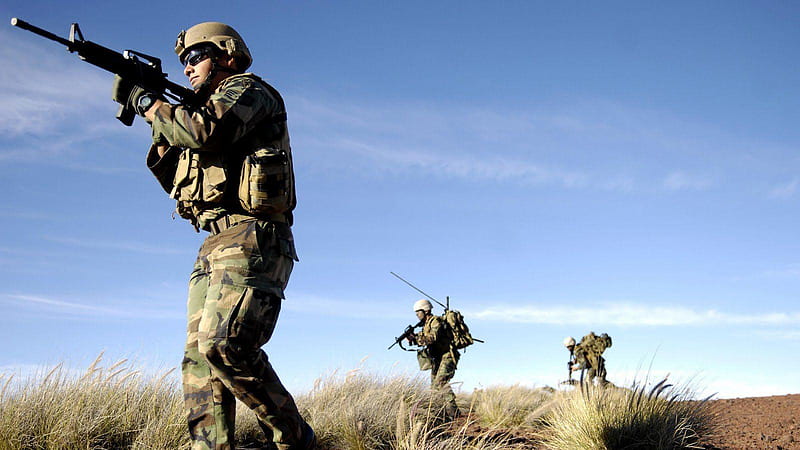According to scholars, the term “insurgency” in the 21st century can be explained as an extended violent conflict in which groups intend to radically change the political or social order of a state or region using sustained violence, social disruption, and political action. Often originates because of inadequately developed or inequitable political, social, and economic conditions, insurgency operations are caused by three key concepts which includes beliefs, actions and structures radically resulting towards sustained violence.
The Indian Army has been engaged in counter-insurgency operations since the 1950s when it was first called upon to create peace in Nagaland. This enabled for the establishment and involvement of the Indian Army to safeguard the country against external threats. However, the last few decades have seen the deployment of the Army towards tackling with internal security, mainly in the Kashmir Valley. This however resulted to threaten the core goal – protection of the country from external threats. The Indian Army recognizes the need for reduced internal security responsibilities and aims to protect Indian citizens and not fight them.
In a mishandled Counter-insurgency operation in a state in India’s Northeast, a tragedy took place killing several civilians. On a regular fourth of December last year, six coal mine workers returning from work in a pickup truck were shot at and killed in the Mon district in Nagaland. This resulted to anger among the locals leading to retaliatory clashes between the locals and the army killing seven civilians and a soldier. According to official figures, the past 21 years has seen – 4,9000 civilians murdered in Kashmir while more than 4,300 were killed in the Northeast states of Assam, Nagaland, Manipur, Nagaland, Meghalaya, Mizoram, and Arunachal Pradesh.
Consequently, the casualties occurred because of “fake encounters, firing between the security forces and militants, mistaken identity or targeted killings by terrorists”. Innocent civilians have been an enormous part of killings in counter-insurgency operations – primarily in Jammu and Kashmir, Northeast and the Left-Wing Extremism affected districts. This is bound to continue, if the security forces constantly misuse the special powers under the Armed Forces Special Act(AFSA). Given the human rights of the guilty-free civilians and security forces, Human Right Acts and Laws in place must be examined. • Armed Forces Special Powers Act, 1958 – An Act termed as the Armed Forces Special Powers Act came into effect by the President on May 22, 1958. Passed by both the Houses of the Parliament, the Armed Forces Special Powers Act saw the approval of the President on September 11, 1958. The bill enables granting special powers to the members of armed forces in disturbed areas in the Northeast states. The special bill grants the armed forces to interfere in any region designated as a “disturbed area”. An area is declared to be disturbed by Centre, Governor of the State, or the Administrator of a Union Territory (UT). • Section 3, Armed Forces Special Powers Act, 1958 – Section 3 of the Act allows applying the special power when a part or whole region is in a disturbed or dangerous situation. This brought to attention the need for the interference of the armed forces. • Section 6, Armed Forces Special Powers Act, 1958 – Under this section of the Act, once an area has been declared to be “disturbed or dangerous” – the security personnel then have the power to: 1. To open fire or use force (even causing death) against any person violating the law. 2. To arrest a citizen without a warrant on the foundational reason of “reasonable suspicion” towards commitment of an offence. 3. To enter and search any establishment without a warrant. 4. To demolish fortified positions, shelters and structures used as hide-outs in the possibility of an attack.
• Section 19, Protection of Human Rights Act (1993) – The Act is concerned with specific legal provisions related to complaints towards human rights violations by the armed forces. However, it must be kept in mind that Section 18 (3) of the Act does not apply to armed forces like the BSF. The former CRPF Director general Prakash Mishra went on to say – “There have been instances of Naxals and terrorists using civilians as human shields and mingling with locals. There are chances of collateral damage in such a situation when forces are carrying out operations. However, in all cases, forces should make every effort to eradicate any civilian killing.” • The Protection of Human Rights Act, 1993 – The Act enables the provision of a constitution of a National Human Rights Commission, State Human Rights Commissions and Human Rights Courts for better safeguarding of human rights.
The recent innocent killings in Nagaland have echoed the voices of citizens to reverse the AFSPA. This has called out for governmental interference towards adequate protection of its citizens and to institute a State Humans Rights Body. The State Human Rights Body with an unbiased task force in place will play a role not just in protecting its citizens, but also in safeguarding the rights of the armed forces. The armed forces must be able to restore the people’s faith by seeking the truth, following the rule of law and being empathetic.

